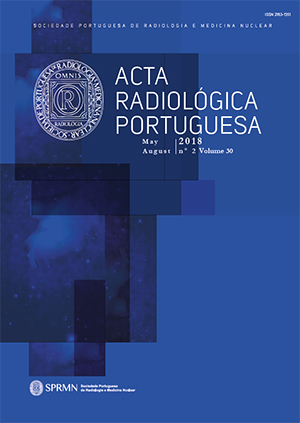Inteligência Artificial em Radiologia: Do Processamento de Imagem ao Diagnóstico
DOI:
https://doi.org/10.25748/arp.14999Resumo
The objective of this article is to present a view on the potential impact of Artificial Intelligence (AI) on processing medical images, in particular in relation to diagnostic. This topic is currently attracting major attention in both the medical and engineering communities, as demonstrated by the number of recent tutorials [1-3] and review articles [4-6] that address it, with large research hospitals, as well as engineering research centers contributing to the area. Furthermore, several large companies like General Electric (GE), IBM/Merge, Siemens, Philips or Agfa, as well as more specialized companies and startups are integrating AI into their medical imaging products. The evolution of GE in this respect is interesting. GE SmartSignal software was developed for industrial applications to identify impending equipment failures well before they happen. As written in the GE prospectus, with this added lead time, one can transform from reactive maintenance to a more proactive maintenance process, allowing the workforce to focus on fixing problems rather than looking for them. With this background experience from the industrial field, GE developed predictive analytics products for clinical imaging, that embodied the Predictive component of P4 medicine (predictive, personalized, preventive, participatory). Another interesting example is the Illumeo software from Philips that embeds adaptive intelligence, i. e. the capacity to improve its automatic reasoning process from its past experience, to automatically pop out related prior exams for radiology in face of a concrete situation. Actually, with its capacity to tackle massive amounts of data of different sorts (imaging data, patient exam reports, pathology reports, patient monitoring signals, data from implantable electrophysiology devices, and data from many other sources) AI is certainly able to yield a decisive contribution to all the components of P4 medicine. For instance, in the presence of a rare disease, AI methods have the capacity to review huge amounts of prior information when confronted to the patient clinical data.
Downloads
Publicado
Edição
Secção
Licença
CC BY-NC 4.0


